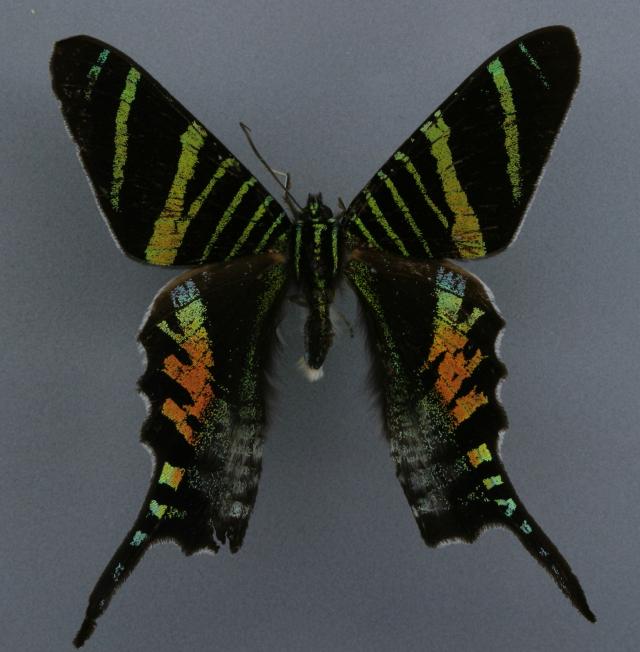
This dayflying moth was endemic to the island of Jamaica and is presumed extinct. There are no known records of this species after the last decade of the 19th Century, and there is a single specimen labeled "Jamaica" among the Peale Collection specimens that have been located in the Academy’s main Lepidoptera Collection. Based on our knowledge of related extant Urania spp., the larval ecology of this species probably doomed it to extinction as Jamaica's lowland rainforests were cleared (Urania larvae feed exclusively on rainforest lianas belonging to the genus Omphalea -- distant relatives of Pointsettia). Migratory behavior between patches of suitable habitat, and population explosions that locally defoliate populations of larval hosts probably required relatively large, intact areas of lowland forest, and as this forest was converted to agricultural land during the colonial era, the moth and its host became increasingly rare.